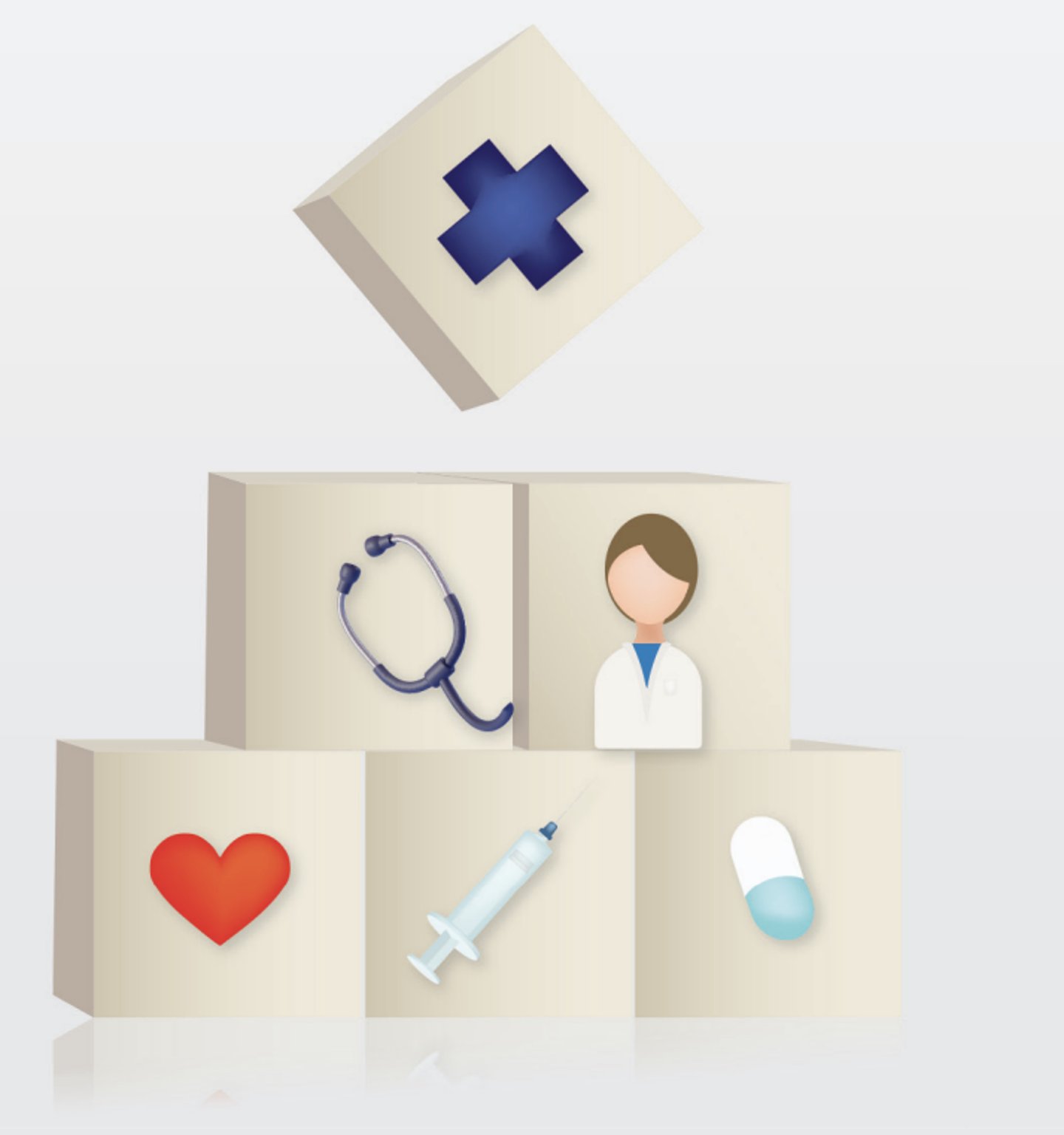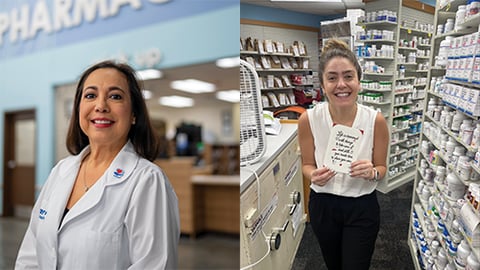Retail pharmacy must mine the gaps
The retail pharmacy industry continues to expand its reach into new models of health-care, in many cases partnering with payers to monitor and treat patients with specific conditions.
Pharmacies are also increasingly collaborating with primary care providers to provide services. Even though some in-store clinics, such as Walgreens’s acquisition of VillageMD, have not worked out as planned, the core value proposition of incorporating more primary healthcare services into the retail pharmacy remains, said Peter Bonis, chief medical officer at pharmacy solutions provider Wolters Kluwer Health.
“Consumers go to pharmacies for some aspects of their care, raising the question of what other services can be offered sustainably,” he said. “Thus, we can anticipate that ‘chapter two’ of this story may be beginning.”
Amazon and Walmart are exploring new opportunities for focusing on specialized healthcare solutions for certain conditions, for example. Last year, Walmart rolled out an initiative in which 25 of its pharmacies are focused on treating autoimmune diseases such as rheumatoid arthritis, Crohn’s disease, ulcerative colitis and plaque psoriasis. Pharmacists will provide specialty services including care coordination, lifestyle recommendations and emotional support services, according to Walmart.
Bonis also noted that the future may be bright for the growth of pharmacies to provide expanded healthcare services, as younger consumers are more open to nontraditional healthcare models than their older counterparts. Wolters Kluwer’s Pharmacy Next survey found that more than half of Gen Z and millennials (56% and 54%, respectively) opted to visit a local pharmacy to receive non-emergency care.
[Related: Time and money impact pharmacy]
“There’s an opportunity here to break from the past with a fresh take on the primary care experience that is designed with younger generations in mind,” said Bonis.
An emphasis on value-based care
Pharmacy retailers are focusing on developing care models that emphasize value-based, patient-centered approaches over fee-for-service models, which simply focus on volume of services provided, said Claire Biermaas, president of corporate partnerships at Cencora, parent of the Good Neighbor Pharmacy network. “As this shift occurs, we’ll likely see the list of patient care services offered in pharmacies grow, especially in areas that treat patients holistically,” she said.
In addition to the vaccines and immunizations many pharmacies already provide, these services could include health screenings, nutrition counseling and disease management, for example. In states where pharmacists have a more limited scope of practice and less supportive reimbursement frameworks, there could be a marked increase in collaboration with physicians to enable pharmacists to provide these services, Biermaas said.
“Regardless of the scenario, pharmacists are poised to take a more active role in patient treatment, helping to advance medication adherence and care management between doctor’s appointments,” she said.
State and national legislation that broadens pharmacists’ scope of practice could result in pharmacists playing a more proactive role in overseeing minor conditions, Biermaas said. This could include legislation authorizing pharmacists to test, diagnose, prescribe and treat low-acuity health issues, such as respiratory illnesses, without a physician’s intervention, for example.
“The aim is to establish a robust support system for healthcare providers and patients, relieving the pressure on overburdened physicians and emergency rooms by handling routine conditions and enhancing the speed of service for patients due to the walk-in convenience of pharmacies, overall, helping improve patient outcomes and reduce healthcare costs,” Biermaas said.
As these new models of care evolve, technology will play an increasingly important role, Biermaas said. Technology will not only streamline processes to ease the pressures associated with the pharmacist’s expanded role, but it will also leverage existing infrastructure and data to enhance patient care, she said. Patients will be able to learn their medication costs upfront, choose between delivery or pickup, and decide if they prefer a pharmacist consultation during pickup or via phone or video when their medication is delivered, for example.
Pharmacies adopting value-based, patient-centered approaches are also increasingly expanding into holistic patient care services and product categories, she said, citing the trend of expansion into specialty medicines as an example.
[Related: Check Out Stories From Past Digital Editions]
“This shift will help enable pharmacists to provide a deeper level of care for patients with complex, chronic conditions that often require advanced therapies and personalized care plans,” said Biermaas.
“Pharmacies are uniquely positioned to deliver these services,” she said. “They have cultivated a deep sense of trust within their communities and the resulting ability to engage effectively with patients and promote adherence to treatment plans. Their proximity and accessible nature facilitate easier access to medications and services, which is particularly beneficial for patients with chronic conditions requiring frequent and timely healthcare interactions. Further, through their accessibility, pharmacies can help bridge gaps between underserved or hard- to-reach patient populations and more specialized healthcare providers.”
Testing and monitoring at Health Mart
McKesson’s Health Mart pharmacies and Health Mart Atlas, a pharmacy service administration organization, have participated with multiple payers in quality-based performance programs, said Crystal Lennartz, president of Health Mart and Health Mart Atlas. These programs include adherence monitoring and healthcare gap closures, particularly for statin use in diabetes, blood pressure and A1C control, she said.
For many adherence programs, pharmacies are incentivized to have regular conversations with patients to promote adherence. These pharmacies have the opportunity to earn additional bonuses if patients reach specific adherence thresholds, Lennartz said. In the statin use in diabetes program, pharmacies collaborate with providers to ensure patients receive and fill statin prescriptions when recommended, and the pharmacy is incentivized when the patient fills the prescription.
In the blood pressure control programs, pharmacies monitor and document patient blood pressure between provider appointments. Pharmacists also counsel patients on optimizing their medication, and the pharmacies receive incentives for taking and documenting a patient’s blood pressure and earn additional payments if the patients’ blood pressure is maintained within guidelines.
A1C monitoring and control programs focus on long-term blood sugar management. In some programs, pharmacies can perform and document the A1C test, and in other programs the pharmacies refer patients to labs or home testing kits. Pharmacies can receive incentives when patients complete an A1C test and when it remains under control, similar to the blood pressure programs.
Lennartz said Health Mart expects to participate in at least seven of these types of programs in 2025. The company offers its Pharmacy Quality Solutions’ EQUIPP technology platform, now owned by Innovaccer, to its operators to help them take advantage of these programs.
These programs are now moving beyond adherence to focus more on patient outcomes, she said. In 2023, Health Mart participated in a payer’s Social Determinants of Health pilot program, which allowed Health Mart Atlas pharmacies in underservednareas to screen and connect patients with local community resources. This pilot was Health Mart’s first opportunity to capture SDOH impact data while reimbursing pharmacists for their services, Lennartz said.
Community Health Worker services also can be reimbursed through Medicaid, Medicare and grants, she said, which can generate incremental revenue while at the same time allowing pharmacy staff to expand their roles. In the past two years, McKesson and Health Mart provided more than 150 scholarships for pharmacy technicians to train and earn their CHW certification, Lennartz said.
“We look forward to continued opportunities to impact health equity by expanding access to care and preventative services in underserved communities,” she said.
Another area that is gaining momentum is remote patient monitoring, Lennartz said.“ While there is not yet a clear revenue model for pharmacies, pharmacists and pharmacy teams can play a meaningful role as care moves closer to home. She also cited the potential for legislation that would expand pharmacists’ scope of practice and thus open up new revenue opportunities.
In addition, Lennartz said Health Mart also has seen success with medical side contracts, including one in Ohio with Medicaid, which allow pharmacies more flexibility to address patient needs, rather than focusing on specific services.
[Related: Brain Drain: Retail pharmacy struggles to retain pharmacists, pharmacy technicians]
“Surprisingly, the majority of claims were for behavioral health, rather than conditions like diabetes,” said Lennartz. “This highlights that patients with chronic diseases often require comprehensive support beyond just managing their primary condition.”
CPESN advances new revenue channels
At Community Pharmacy Enhanced Services Networks, a pharmacy-owned network that seeks to identify healthcare gaps and improve patient outcomes, one of the biggest growth opportunities is working with state Medicaid plans to help improve the health of patients with chronic illnesses, said Cody Clifton, director of practice transformation and clinical programs at CPESN USA. The group is currently working with Medicaid programs in 11 states and eyeing expansion to additional states, he said.
Many of the patients in these programs have two or more chronic conditions that require multiple medications, Clifton said. Conditions can include diseases such as asthma or diabetes as well as behavioral health issues that may require antipsychotic medications, for example. Participating pharmacies are documenting their visits with patients in their work flow to facilitate reimbursement as part of a value-based care platform.
“These pharmacies have been providing a lot of this care already,” said Clifton.
Another opportunity that CPESN is pursuing is a subscription-based plan that offers patients access to primary healthcare providers through the pharmacy. That model is still in the early stages, and expansion is contingent in part on navigating state legislative and regulatory hurdles, Clifton explained.
Some CPESN pharmacies are also leveraging telehealth solutions to connect patients with primary care providers, he said. These pharmacies are working together with the primary care provider, who is connected to the patient in-store via a remote connection, to address issues such as urgent care needs or to ensure medication continuity if a patient’s primary care provider retires or is otherwise inaccessible, for example.
A key mission of these services is cutting down on emergency room visits, which are typically much more expensive than telehealth visits at a local pharmacy. This makes these programs appealing to payors, Clifton explained.
The addition of community health workers is another signi cant initiative at CPESN, Clifton said. These workers are tasked with connecting patients with local resources, such as food banks or transportation, to healthcare facilities. “We’re really pushing most of our pharmacies to have community health workers, because the health plans really see the value of helping to close these gaps.”
Thrifty White becomes part of the community healthcare team
Thrifty White, with 90-plus retail pharmacies across several Midwestern states, seeks to become an integral part of the healthcare ecosystem in each of the communities where it operates, said Jeremy Faulks, VP of pharmacy operations, Thrifty White.
The company is focused on streamlining operations, building e ciencies and increasing capacity for its pharmacies to become involved in broader clinical services and patient care activities, he said.
“We understand the importance of providing care as a team and not within a silo in the pharmacy,” he said.
Some of the clinical care initiatives Thrifty White is working on include chronic disease management programs, point-of-care testing, test-to-treat, comprehensive medication management services, immunizations, diabetes self-management education and support and assisting in screening for preventative care gaps such as breast cancer screenings, colonoscopies, kidney health evaluations and others.
To support these efforts, Thrifty White has several initiatives that seek to support the development of pharmacy technicians to be able to work alongside pharmacists to support clinical care activities, he said. Technology will play a critical role in enhancing the retailer’s ability to deliver high-quality care, he said.
Thrifty White built its own software platform, PatientRicity, a pharmacy version of an electronic health records platform. The software supports credentialing with individual payers, documentation of care, billing and data pathways that facilitate interoperability between local providers and health plans, Faulks explained.
Said Faulks, “As reimbursement structures move towards value-based care, we are positioned to play a meaningful role with our infrastructure to enable a different practice model built around the patient, our communities, and to improve health outcomes.”









